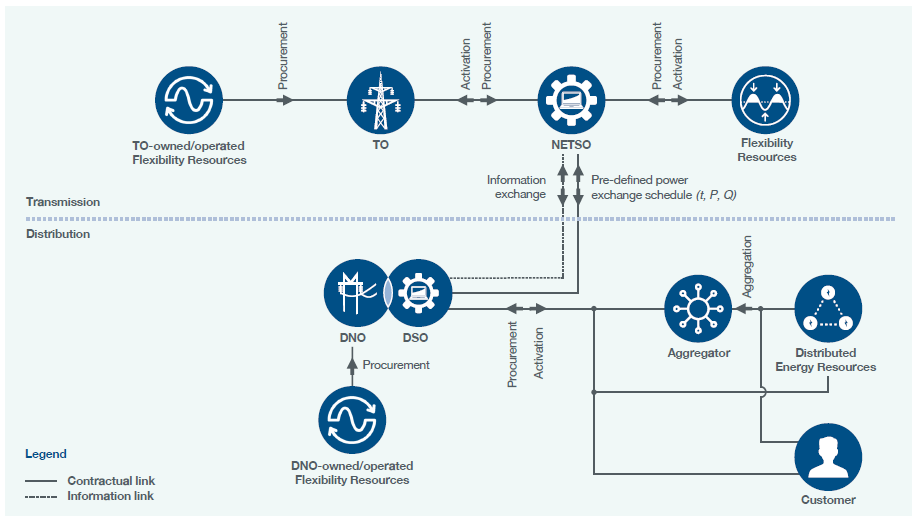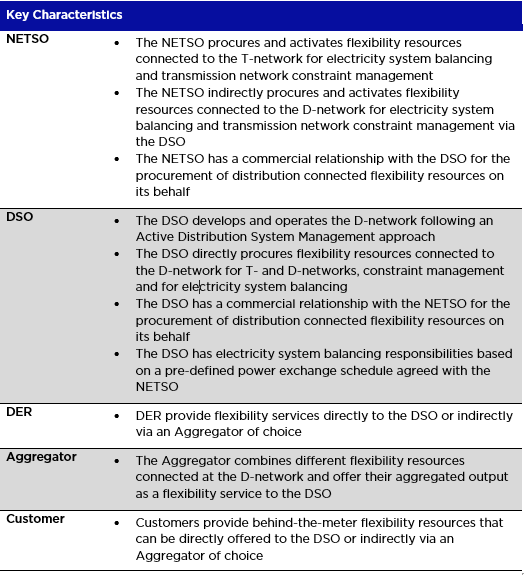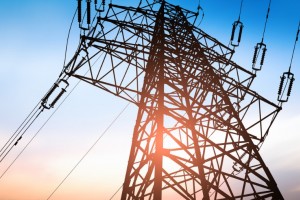UK taking the next step: from mini grids to open networks
Great Britain is busting open markets for Network Flexibility
I recently had the pleasure of meeting with Energy Networks Australia’s equivalent in the UK, the Energy Networks Association, to see first-hand how their Open Networks Project is progressing and discover how this might apply to the Australian context as we consider a potential Distribution System Operators (DSO) framework, with a public consultation paper to be launched in coming weeks.
There is wide consensus that electricity network reformation is an imperative step towards a smart grid, and Great Britain is an international leader in this area, with a system-wide evolution taking place to create a more flexible energy system.
The Open Networks Project, now in year two of a seven year process to re-define how the UK’s energy networks will operate in the modernised ‘smart’ era, is progressing well. The changes the project aims to deliver will give households, businesses and communities the ability to take advantage of a new range of energy technologies and services, including renewable generation, battery storage and electric vehicles, to take control of their energy and lower their costs.
A collaborative approach
While it’s led by the Energy Networks Association, Open Networks has an impressive list of participants. The UK’s leading minds in the energy industry, including all electricity network operators, the National Grid, academics, NGOs, the Department of Business, Energy and Industrial Strategy and the energy regulator Ofgem, are collaborating on how to open up markets for network flexibility.
Flexibility services include businesses and consumers increasing electricity generation, or adjusting their electricity consumption up or down to support balancing of supply and demand in real time, in response to a financial incentive provided by an agreement with a network operator. They include:
- Selling power generated by new technologies, such as solar panels and wind turbines
- Businesses adjusting their electricity use at the times of day when they least need it
- Using new smart energy efficiency technology to adjust consumption remotely and buying electricity from battery storage.
The initiative has progressed to Phase 2, ‘Impact Assessment”, which will run throughout 2018 to complete trials and the development of preferred designs from the results.
A billion reasons to innovate
To-date, innovation by UK’s energy networks has already enabled close to £1bn of cost savings between now and 2023. Furthermore, research conducted by the Imperial College London and The Carbon Trust for the Smart Systems and Flexibility Plan indicates that by 2050, these savings could be increased to £17-40bn across the UK energy system. These savings will be delivered by developing a smarter, more open energy system, with the use of flexibility markets.
This research also finds that network companies will “rapidly increase the use of competitive markets” over the next 6 years, under the current RIIO ED1 price control period.
Do you know your DNOs?
The role of local electricity networks – also known in the UK as Distribution Network Operators (DNOs) – has begun to change as new energy technologies and services are deployed across the UK. Local networks are moving away from their traditional role of more centralised delivery of electricity from large power stations via the national grid, to playing a more active role in balancing local electricity generation and use. In parallel, the role of National Grid as the System Operator is also changing to enable a transition to a more decentralised, low carbon system.
This shift creates a host of new opportunities, both for more intelligent management of networks and for networks to act as platforms to deploy smart energy technologies and services, with all the benefits that they bring for customers. A key component to delivering these benefits is the establishment of a Distribution System Operator (DSO) function. Defining the roles and responsibilities required to support the transition to a smarter, more efficient electricity network is essential, however before that can be done the functions and requirements for what a Distribution System Operator needs to be established. A major cornerstone of phase 2 the Open Networks Project is focused on identifying and testing these requirements with stakeholders across the UK in order to ensure that the future market models deliver the identified benefits to customers.
Through this process, eight DSO functions have been identified, described and tested with stakeholders to cover a wide range of potential DSO activities going forward. Those functions are:
- System Coordination
- Network Operation
- Investment Planning
- Connections & Connection Rights
- System Defence and Restoration
- Service/Market Facilitation
- Service Provision
- Charging
The UK Energy Networks Association undertook a wide-ranging review of potential market models for ways in which third parties could provide flexibility services to the DSO. This included a review of the models identified in phase 1, models from Ofgem, industry, academia and other countries. In consultation with key stakeholders, a robust subset of potential market model options for DSO were selected that could support the required functions of the DSO while delivering neutral market facilitation.
Get Smart
The UK Energy Networks Association used the Smart Grid Architecture Model (SGAM) to capture the definition of different market models for DSO. In using SGAM, they have captured each of their market models’ interactions between different ‘actors’; from a high-level ‘Business Layer’ perspective, down to the detail of what information is passed using what communications methods between equipment. An example of one of the test models is below. DERs and aggregators of DER services interact directly with local DSOs to provide services for distribution and transmission constraint management and for electricity system balancing. DSOs then schedule the required DER services to deliver Network System Operator (NETSO) and DSO requirements.
Figure 1. Example of DSO Market Model – DSO Coordinates


The Energy Network Association is not yet recommending one model, but is developing them all so that they are well understood by stakeholders. The models can then be adapted based on feedback and assessed to inform a selection.
Once completed, testing will show how potential models and allocation of roles and responsibilities will work in practice. It might be that future models will be hybrids of what is being modelled in this initial phase.
Learnings from across the pond
Energy Networks Australia is engaging closely with the UK’s Energy Network Association to share ideas and inform our own work program.
The most important element of this approach is flexibility. When flexibility is built into the infrastructure from the beginning, the system can evolve without having to start again. Flexible building blocks mean engineers deploying the network can change the shape of the infrastructure to meet the problem that they encounter. There can be limitless configurations of the pieces, meaning a new solution can be developed for each unique region and situation.
Customer-focused and consumer led consideration, has been the defining factor of the Open Network Project, with extensive stakeholder consultation taking place.
As the scope of the project increases in 2018, even wider stakeholder engagement will occur to ensure the customer experience is considered from many angles.
Energy Networks Australia is working closely with AEMO to consider our own options for a DSO framework to open up our nation’s network flexibility, to ensure we deliver the changes a smart, modernised grid requires.

